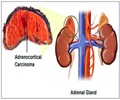Babies who have experienced higher testosterone level in the womb are better at distance running, a correlation present in both sexes but stronger in men.

Now, University of Cambridge’s research on marathon runners using finger length as a marker for hormone exposure shows that people who experienced higher testosterone in the womb are also better at distance running, a correlation particularly strong in men, although also present in women.
The observation that endurance running ability is connected to reproductive potential in men suggests that women in hunter-gatherer past were able to observe running as a signal for a good breeding partner, said Dr. Danny Longman. Longman added that it was thought that a better hunter would have got more meat, and had a healthier and larger family as a consequence of providing more meat for his family, but hunter-gatherers may have used egalitarian systems with equal meat distribution as is seen in remaining tribes today. In which case more meat is not a factor, but the ability to get meat would signal underlying traits of athletic endurance, as well as intelligence to track and outwit prey and generosity to contribute to tribal society. All traits people want passed on to their children.
Using the largest sample of marathon runners of any study of its kind, Longman and colleagues tested for specific finger lengths known as the 2D:4D digit ratios. Previous studies have showed that those exposed to more prenatal testosterone have a longer ring finger (4th digit) in comparison to their index finger (2nd digit). This digit ratio is the most accurate known way to tell if an adult was exposed to higher levels of testosterone as a fetus, a proven predictor of the potential for reproductive success in men, say researchers.
The team analyzed 542 runners (439 men; 103 women) by photocopying hands and taking run times and other key details just after runners crossed the line and found that the 10 percent of men with the most masculine digit ratios were, on average, 24 minutes and 33 seconds faster than the 10% of men with the least masculine digit ratios.
The correlation was also found in women, but was much more pronounced in men, suggesting a stronger evolutionary selection in men for running ability. The 10% of women with the most masculine digit ratios were, on average, 11 minutes and 59 seconds faster than the 10% with the least masculine.
Advertisement
The study appears in the journal PLOS ONE.
Advertisement













